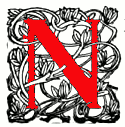
o one has done half so much to bring about this result [the acceptance and prestige of painting] as Mr. Ruskin. He introduced a novelty into art-criticism: he made it ethical. In volume after volume, written with extraordinary eloquence, he examined, not so much the technical skill displayed in pictures, as the moral qualities and motives of the artist, with his pencil in hand, and the moral bearings of the work on us who look at it. The task was a most invidious one, from which a more timid man would have shrunk; but in following the course which he did Mr. Ruskin made art-criticism for the first time intelligible to the English mind. That he was sometimes wrong no one can deny; that he dogmatized with a vengeance is quite clear; but he popularized painting more than any man, by exhibiting with masterly skill its moral relations; he hit the popular taste; he represented the popular mind; and he did much to elevate art by awakening artists to a consciousness of their dignity. As a natural consequence, the painters receive such favour from the public as they have never before enjoyed.
And the lesson to be derived from this history is clear. We have seen in our country a sort of Castor and Pollux movement in the twin arte of painting and the drama: as the one rose the other was lost to sight, as that other rose the first sank into disrepute. First painting failed us because it went against our consciences ; then the drama, which had ostentatiously commenced in moralities, and which had flourished in the absence of painting, failed us because it ventured to defy all moral sensibility; lastly, painting rose into note, and made way among us as soon as it established itself in the moral feeling. All this shows that art is nothing save as it is rooted in the .moral sense of a people; that it is popular only so long as it reflects the popular conscience, and is felt to elevate the popular taste. [II, 172-73]
Links to Related Material
Bibliography
Dallas, Eneas Sweetland . The Gay Science. 2 vols. London: Chapman and Hall, 1866. A HathiTrust online version of a copy in the Harvard University Library. Web. 30 April 2022.
Created 3 May 2022
Last modified 23 January 2024